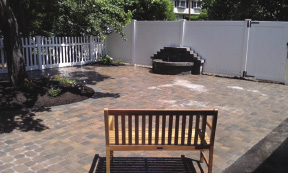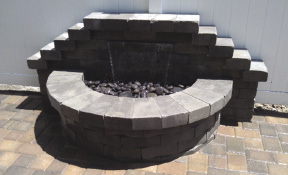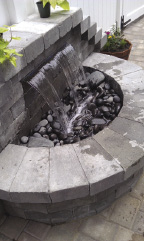Beautiful and effective landscaping is important for any kind of residential space—any place where people spend periods of time either sitting, strolling, entertaining, contemplating, or simply relaxing. And no one believes in this more than the team at Winterberry Gardens, located in Southington, Conn. The look and feel of your personal surroundings goes a long way toward helping achieve a sense of serenity, stability, optimism and security. It isn't too hard to imagine, then, how important it is to design and implement a successful landscape at a retirement home or nursing home, where the quest for serenity, stability, optimism and security is often higher than it is at private homes and businesses.
That's the challenge I was recently presented with, and I am pleased to report that the entire Winterberry team and I were successful in meeting it head on. I am more than happy to share some of the tips and methodologies we employed along the way to meet this professional milestone.
I started by visiting the senior living facility and taking a tour of both the interior and exterior spaces. Often the style and ambiance of an interior design play a role in identifying the kind of landscape that will support the atmosphere and character that facility leadership wants to provide to its residents or tenants, its employees or customers. Professional landscapers who show absolutely no interest on what's going on inside a building - or worse yet, refuse the offer to simply take a look - should not be allowed to call themselves professional.
After the tour I had a very open and detailed conversation with the manager about some of the things the organization was looking to accomplish with a new landscape design to surround the two-site facility. Here's where an additional challenge was presented: they wanted to create an outdoor space that was extremely well suited, both aesthetically and functionally, for residents who suffer from mild to serious dementia.
The client, Sheriden Woods, has both a health care center and a nursing home in Bristol. Both had the misfortune of having garden areas that just did not fit the needs of the residents.
Here's where my research phase began in earnest. I absorbed all the information I could on sensory gardens, and I schooled myself on the needs of dementia patients and others who require continuous care. When I combined all this research with my own sense of environmental style and design, which is rooted in intimacy and domesticity, I was able to develop ideas and plans that I was eager to share with the client.
It is important to note that there are a number of specific factors that must be considered when designing a garden for dementia care residents. While trees, bushes and plants play an important role for the sensory effects they provide, whether or not they can be used, and where they can be used, depends on the property layout, the security of the grounds, the kind of visual appeal being sought, accessibility for maintenance purposes, handicap accessibility for wheelchair and walker patients, path surfaces, proximity to gates and fences, the amount of shade needed, and much more. The list of factors is truly amazing, but the best landscape professionals will take all the time necessary to go over it point by point, issue by issue. Shade, for example, is important because many residents cannot be in the sun due to their medications. The accessible placement of plants, as another example, is essential because there may be residents who wish to take up the hobby of caring for them yet cannot bend or reach with ease. The use of nontoxic plants is another important factor, as is the placement and functionality of all water features, and the need for entirely smooth paved surfaces.
After the research and the point-by-point considerations, our project took just about one week to reach its final design, and two weeks to build. I was able to select all the plants needed at our on-site garden center at Winterberry and the client was thrilled with the results.
I'm proud of my work, the work of my crew, and the role I have played in encouraging so many senior citizens to spend more time outside. That promotes health and happiness. What's more, our work has encouraged these residents and their visiting families to spend more time together, and there's nothing more valuable than that. It's a wonderful feeling to know that families can visit their elderly loved ones, sit in a beautiful garden, and instantly make more great memories together. Sensory gardens may not be able to cure Alzheimer's or dementia, but they enhance the quality of life, and that, in turn, is what landscape professionals do, too.
Cheryl Varvelli is a landscape designer at Winterberry Gardens, Southington, Conn.
Tags:












